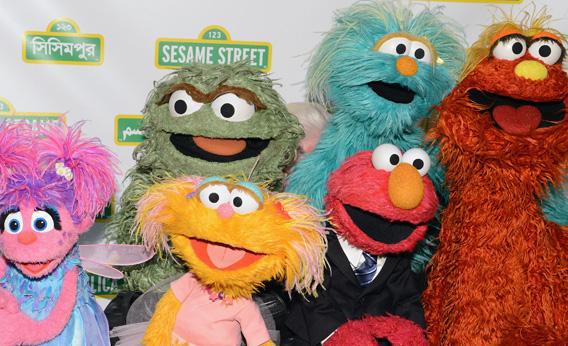Guards at Guantanamo Bay tried to coerce inmates into talking with songs from Sesame Street played on repeat, according to a new Al-Jazeera documentary. (The Pentagon on Thursday acknowledged music has at times been used as a “disincentive,” but “in a measured way” that did not amount to mistreatment or torture.) Past reports on “torture music” in the U.S. war on terrorism have described CIA and military interrogators using albums from Eminem and the death-metal band Deicide to break prisoners’ resistance. What’s the best kind of music to use when you’re trying to break someone’s will?
Just about anything, as long as it’s loud and repetitive. Over the years, U.S. soldiers, spies, and law enforcement agents have used everything from Barry Manilow to Nine Inch Nails. Often their choices seem geared more toward self-amusement than psychological effectiveness. When U.S. forces surrounded Panamanian dictator Manuel Noriega in 1989, they reportedly blasted Van Halen’s hard-rock anthem “Panama” and Howard Stern’s radio show until he surrendered.
In general, torture songs tend to be either loud and aggressive or simple and jangly. In 2003, a U.S. Psychological Operations sergeant told Newsweek that he had bludgeoned Iraqi prisoners of war with Metallica’s “Enter Sandman.” He explained, “If you play it for 24 hours, your brain and body functions start to slide, your train of thought slows down and your will is broken. That’s when we come in and talk to them.” Meanwhile, a 2008 article in the Guardian identified “I Love You” by the children’s show character Barney as one of U.S. interrogators’ preferred instruments of persuasion. And in the 1990s, FBI agents played Tibetan chants, 1950s Christmas carols, and Nancy Sinatra’s “These Boots Were Made for Walkin’” during a standoff with David Koresh’s cult in Waco, Texas. The New York Times reported that Billy Ray Cyrus’ country hit “Achy Breaky Heart” was rejected, perhaps because officials feared some of the cult members would like it.
It’s certainly true that the ideal torture tune depends heavily on the individual captive’s taste. People can train themselves to like or dislike just about any genre, though most people’s preferences tend to solidify in their early 20s. So if a prisoner grew up hating polka, that would be the thing to play on repeat if you wanted to drive him nuts.
If you don’t know what kind of music your prisoner happens to detest, your best bet would be to go with something dissonant. Research has shown that consonant tunes hold appeal across cultures, while dissonant ones tend to induce stress. One study found that babies as young as 4 months are more likely to wince, cry, or fuss in response to dissonant music, suggesting that humans’ preference for consonance is innate. Another common strategy is to pick a song that’s especially catchy, on the theory that it would become maddening after being repeated several hundred times. Jangly Christmas ditties, for instance, are a staple of a Chicago Public Radio show dedicated to unearthing the most annoying music.
It’s unclear whether these techniques actually get prisoners to provide useful information, though. Some interrogators opt for pleasant music instead, played in the suspect’s own language at a reasonable volume, in the hopes that a more comfortable prisoner will be more likely to cooperate.
Got a question about today’s news? Ask the Explainer.
Explainer thanks John Cheney of the Psychological Operations Veterans Association, Dave Sulzer of Columbia University, and Robert Zatorre of McGill University.
